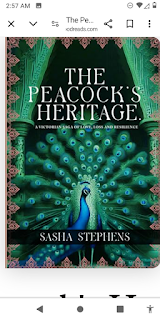By Julie Sara Porter
Bookworm Reviews
This book is available on Voracious Readers Only
Spoilers: Rebecca Rosenberg has made a career of writing Historical Fiction novels about fascinating and captivating women whose names might have skipped under modern radars but who left lasting legacies in their time and in ours. Her previous work, The Champagne Widows series, captured Barbe-Nicole Clicquot Ponsardin and Jeanne Alexandrine Louise Melin Pommery, two Frenchwomen whose business sense, marketing style, and resilience changed the wine industry forever.
This time Rosenberg takes her writing talents to the United States and gives us probably her most captivating, controversial, and outstanding protagonist yet in Gold Digger: The Remarkable Baby Doe Tabor. Elizabeth McCourt “Baby Doe” Tabor (1854-1935) was an interesting figure in Colorado history. A socialite, entrepreneur, and miner, Baby Doe managed to inspire controversy because of her willingness to work alongside the male miners and her scandalous second marriage to businessman and eventual Senator, Horace Tabor.
Gold Digger covers a lot of ground in Baby Doe’s life from her first marriage to Harvey Doe, their move from Wisconsin to Colorado, the opening and backbreaking work at the mines particularly the Does’s Central City gold mine and Tabor’s Leadville Matchless silver mine, the controversies surrounding her divorce from Doe and marriage to Tabor, the rise of Leadville and Denver as big cities,the birth of her two daughters, Lily and Silver Dollar, the Sherman Silver Purchase Act, and the Panic of 1893 which wiped out the Tabor’s fortunes. It’s a tough life going from rags to riches back to rags again especially in the mining towns which became thriving metropolises but still had a lot of toes in the Old West Frontier Town “only the strong survive kill or be killed” mentality.
Baby Doe is written as someone with a lot of strength, spirit, and independence. This is particularly noticeable when she works at the mine. She dresses in trousers and shirts and works with a pickaxe alongside the men (this incident is where the nickname, Baby Doe was coined).
Despite many local women and Harvey’s objections, she continues to work. She is not someone who is afraid to get messy and do the hard supposedly unladylike work. These actions show her as resilient and more capable than many of the men around her, particularly her feckless first husband and emotional second husband.
That independent spirit is also revealed in Baby Doe’s stormy love life. When she learns that Harvey is spending time with prostitutes, she isn't afraid to chuck him out and file for divorce.
At times, Baby Doe acts very impulsively without thinking of the long term consequences. Her carelessness manifests itself during her affair with Harvey Tabor since it begins while he is married to his first wife, Augusta. Baby Doe is controversial enough as a divorcee but having an extramarital affair is enough to make her the subject of scorn and render her unacceptable to the growing Denver high society.
Their affair culminates in Tabor's divorce and his and Baby Doe’s marriage but it does cause some long term ramifications during Tabor's run for Senate. Their financial difficulties are also augmented by Tabor’s former wife and estranged son who refuse to give them much needed aid because of the hurt that they still feel over Tabor and Baby Doe's actions.
Baby Doe’s adaptable nature is present during her second marriage. Once the hard-edged woman in men's clothes that worked in the mines, she transforms into a society matron. Though there are many who are still scandalized by the Tabor's affair and Augusta and her inner circle are quite combative, Baby Doe manages to acquire a good reputation. In the Gilded Age, nothing removes a stain on one's character faster than money and the Tabor’s use their silver mined wealth to their advantage. Baby Doe's fascination with beautiful clothes and the latest fashion make her a style icon. They also make Denver a cultural center by providing funds to open an opera house and host arts events. When she was poor, Baby Doe lived hard and tough. When she was rich, Baby Doe lived ostentatiously and provocatively. Either way, she was someone who left quite an unforgettable impression on those who knew her.
Rosenberg’s next book, Silver Echoes, is a sequel to Gold Digger. Presumably it is about Baby Doe’s daughter, Silver Dollar, who like her mother before her was pretty wild, had a controversial love life, and left quite an impression. If this book is any indication, both mother and daughter Tabor still have a lot to say and memorable stylish ways of saying them.









